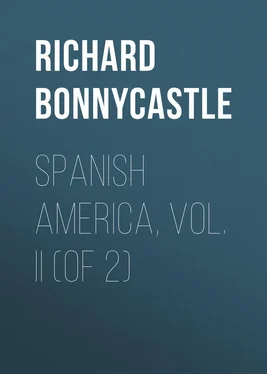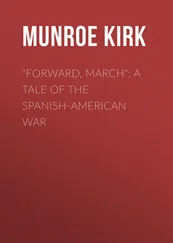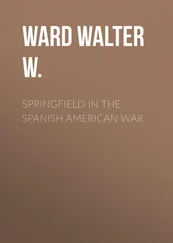Richard Bonnycastle - Spanish America, Vol. II (of 2)
Здесь есть возможность читать онлайн «Richard Bonnycastle - Spanish America, Vol. II (of 2)» — ознакомительный отрывок электронной книги совершенно бесплатно, а после прочтения отрывка купить полную версию. В некоторых случаях можно слушать аудио, скачать через торрент в формате fb2 и присутствует краткое содержание. Жанр: foreign_antique, foreign_prose, на английском языке. Описание произведения, (предисловие) а так же отзывы посетителей доступны на портале библиотеки ЛибКат.
- Название:Spanish America, Vol. II (of 2)
- Автор:
- Жанр:
- Год:неизвестен
- ISBN:нет данных
- Рейтинг книги:4 / 5. Голосов: 1
-
Избранное:Добавить в избранное
- Отзывы:
-
Ваша оценка:
- 80
- 1
- 2
- 3
- 4
- 5
Spanish America, Vol. II (of 2): краткое содержание, описание и аннотация
Предлагаем к чтению аннотацию, описание, краткое содержание или предисловие (зависит от того, что написал сам автор книги «Spanish America, Vol. II (of 2)»). Если вы не нашли необходимую информацию о книге — напишите в комментариях, мы постараемся отыскать её.
Spanish America, Vol. II (of 2) — читать онлайн ознакомительный отрывок
Ниже представлен текст книги, разбитый по страницам. Система сохранения места последней прочитанной страницы, позволяет с удобством читать онлайн бесплатно книгу «Spanish America, Vol. II (of 2)», без необходимости каждый раз заново искать на чём Вы остановились. Поставьте закладку, и сможете в любой момент перейти на страницу, на которой закончили чтение.
Интервал:
Закладка:
Richard Henry Bonnycastle
Spanish America, Vol. II (of 2)
CAPTAIN-GENERALSHIP OF CARACCAS
Caraccas is a name taken from that of a tribe of Indians, and given to a country which includes New Andalusia, or Cumana, with Margarita, Barcelona, Venezuela, or Caraccas Proper, Maracaybo and Coro, on the coast of the Caribbean sea, Varinas and Spanish Guiana in the interior.
BOUNDARIES AND EXTENT
It is bounded on the north by the Caribbean sea, east by the Atlantic, south by Peru and Dutch Guiana, and west by the kingdom of Santa Fé or New Granada; its extent may be computed from the twelfth to the eighteenth degrees of north latitude, and occupies a space extending over a surface equal to 48,000 square leagues.
POLITICAL DIVISIONS AND GOVERNMENT
The Caraccas are subdivided into seven provinces; viz. New Andalusia or Cumana; Barcelona, Venezuela or Caraccas Proper, containing Venezuela and Coro, Maracaybo, Varinas and Guiana, with the detached government of the island of Margarita; the whole of these are under the particular superintendence of an officer of the highest rank, who is styled captain-general of the provinces of Venezuela, and the city of Caraccas. The population amounts to nearly one million, of whom sixty thousand are slaves, and about one-ninth Indians.
DISCOVERY AND HISTORY
The coast of this country was originally discovered by Columbus in 1498, during his third expedition. Several adventurers succeeding in exploratory voyages on this part of the continent, the Spanish government came to the determination of endeavouring to place colonies on its soil. These being chiefly ill conducted, and managed by priests unacquainted with the manners and customs of the natives, did not succeed, and it was found necessary to endeavour to subdue the inhabitants by force. When this was partially effected, and Spanish settlers were placed in some security, the management of the new colonies was entrusted to the care of the Welsers, a German mercantile company. These people exercised, for a length of time, an uncontrolled sway over the unfortunate Indians and the colonists. Their excess of punishment and their fraud becoming at last notorious, the king of Spain deprived them of their power, in 1550, and appointed an officer of the crown to administer justice to the oppressed.
This office, under the title of captain-general of the Caraccas, has subsisted ever since, and with some few variations in the territorial divisions, and some abridgments of the authority of the person who fills it, it existed in the same form, until the year 1810. At this period, the mother country, subdued in part by the victorious arms of the French nation, had no time to attend to the situation of her transatlantic colonies. Engaged in destructive and terrible struggle herself, she little knew of the events which were taking place in the Americas, or if she did know them, was unable to assist those subjects devoted to her cause, or to quell the insurgent and ambitious. Taking advantage of the shackled state of the resources of Spain, the disaffected raised the standard of rebellion, and formed a junta suprema (a congress, or supreme council) in Caraccas. At first they published their acts in the name of Ferdinand the Seventh; but soon, however, on the arrival of Miranda with some troops, declared themselves independent of the mother country, and appointed Miranda to the chief command. Spain now placed their ports in a state of nominal blockade.
They have since been daily engaged in hostile measures, and junta has succeeded to junta, royal power to insurgent government, and vice versa , with little interval up to the present moment. The Caraccas may indeed be styled the focus of the Spanish American revolution. Numerous and bloody actions have taken place between the Spanish troops and the Caraccanians, Miranda has been beheaded, and the captain-general has reinstated himself.
Don Simon Bolivar, a native of the country, possessing much property and considerable influence, has been the great leader of this revolt, styling himself president and commander in chief of the united provinces of Venezuela. Obtaining from the congress of a neighbouring state (New Granada) an army of 600 men, he marched against Monteverde, the captain-general who had beheaded Miranda and punished his colleagues, and meeting with few obstacles to surmount entered the city of Caraccas as conqueror, on the 4th August, 1813. The captain-general fled, and refusing to treat with the insurgents, as derogatory to the honour of the master he represented, remained quiet until he received from Spain a reinforcement of 1200 men; he then attacked the city, but was repulsed with the loss of nearly his whole army, and himself severely wounded. In discussing the historical facts relating to South America in general, we have entered more at large upon this subject. At present Bolivar occupies the lower parts of the Orinoco, having made the town of Angostura his head-quarters.
We have chosen the description of the kingdom of Peru as the proper place to give detail of the general historical facts relating to the whole of South America, as it was in that kingdom that the Spanish government first took a consolidated form; we shall, therefore, at present recur to the metropolis, description, and political divisions of the captain-generalship we are now engaged in treating of.
CAPITAL
The city of Caraccas, or as it is written by the Spaniards, Caracas, is the metropolis of this vast region, and has given its name, within a late period, to the whole government. It is situated in 10° 30' 15" north-latitude, and 67° 4' 45" west longitude, the highest square being elevated 2903 feet above the level of the sea, at the commencement of a fine plain or valley, which extends nine miles to the eastward, and has nearly the same breadth, through which runs the river Guayra; the site of the town is an uneven ground with a steep slope; it was founded by Diego de Losada, in 1567, and called Santiago de Leon de Caracas, in order to have a permanent settlement in the neighbourhood of some gold mines, which were imagined to be very productive. The ground is so precipitous, that the few carriages which the inhabitants possess are little used. The Anauco, the Catache, and the Caraguatu, three small streams, run through the city from north to south; the second of these furnishes the water used by the labouring classes, the rich inhabitants having that useful fluid brought from a stream about three miles off, supposed to possess peculiar medicinal qualities.
The streets of Caraccas are straight, wide, and intersect each other at right angles; the houses very handsome and spacious; there are some fine squares, and a handsome cathedral, with eight churches and five convents. This city is the seat of the metropolitan, archbishop of Caraccas, and contains a royal audience, which governs the civil affairs of the captain-generalship, and of which court the officer holding the reins of government is always president, it being in fact a sort of legislative council, composed of the governor and great state officers. The number of inhabitants of this celebrated town are stated not to exceed 20,000 at present, owing to the tremendous loss sustained by the earthquake in 1812, and to the recent sanguinary events which have taken place. The theatre of Caraccas holds from fifteen to eighteen hundred persons, and is well frequented; the female part of the audience occupy the pit, and are separated from the men. The pleasantest part of the year is during the months of November and December, when the air is cool, and the mornings very fine, but the evenings are foggy and damp. During the months of June and July, the nights are beautiful and serene; in fact, the climate during the whole year is so good, that this city may be said to enjoy a perpetual spring.
Читать дальшеИнтервал:
Закладка:
Похожие книги на «Spanish America, Vol. II (of 2)»
Представляем Вашему вниманию похожие книги на «Spanish America, Vol. II (of 2)» списком для выбора. Мы отобрали схожую по названию и смыслу литературу в надежде предоставить читателям больше вариантов отыскать новые, интересные, ещё непрочитанные произведения.
Обсуждение, отзывы о книге «Spanish America, Vol. II (of 2)» и просто собственные мнения читателей. Оставьте ваши комментарии, напишите, что Вы думаете о произведении, его смысле или главных героях. Укажите что конкретно понравилось, а что нет, и почему Вы так считаете.












